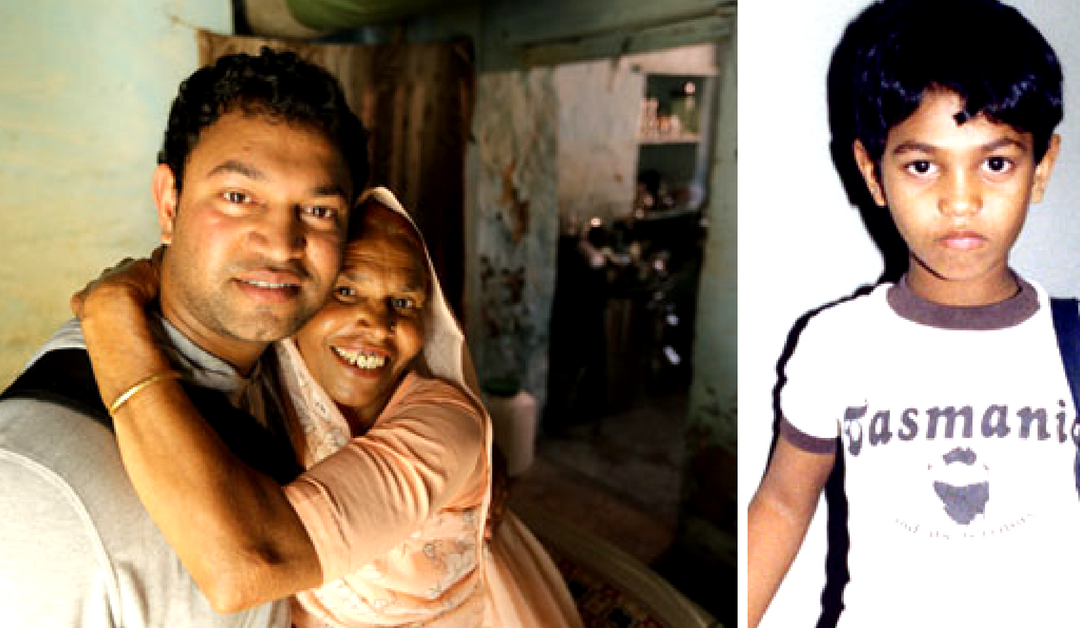“Every great story happens when someone decides not to give up.” Spryte Loriano
1986 – Burhanpur Railroad Station, Ganesh Talai, India: Saroo was terrified. The afternoon had begun with excitement as the five-year-old tagged along with his 14-year-old brother, Guddu, to the train station. It was a good place to beg for food and money. Guddu left Saroo on a bench, told him to stay there, and promised to be back soon. Six hours later, he had not returned.
Saroo sat alone, crying in the dark. He missed his mother and brother but had no idea how to get back to their tiny one-room house several miles away. Unbeknownst to Saroo, Guddu had been hit and killed by a train.
Wandering around the station looking for Guddu, Saroo climbed onto a train just before it departed the station. Exhausted, he was rocked to sleep by the train and when he woke, it had stopped at the massive Howrah Railroad Station in Calcutta. Saroo was unaware that while he slept, the train had traveled hundreds of miles across India.
He wandered the streets of Calcutta begging strangers for help. Saroo repeatedly cried “Ginestlay?” (Ganesh Talai), the name of his town. He hoped someone would help him find his town and his mother, but the busy crowds, most of whom did not speak his Hindi dialect, ignored him.
After scavenging food for a terrifying week on the streets of Calcutta, a teenage boy took Saroo to the police station. Saroo didn’t know his last name. He told the police that he lived in Ginestlay and got on a train at Burampour Station. Their search to find Saroo’s town and family was short and unsuccessful, and Saroo was placed in the Nava Jeevan Orphanage.
Saroo’s mother, Kamla, searched for him for months. She rode trains across India to Bombay, Calcutta, and Bhopal, looking for him. Although she eventually gave up her search, she always believed that Saroo would come back one day.
On September 25, 1987, a year after Saroo went missing, he was placed on a plane to Melbourne, Australia, where he was met by his adoptive parents, Sue and John Brierley. They flew with him to their home in Hobart, Australia. Saroo spoke no English, and the Brierleys spoke no Hindi, but they welcomed him into their home and treated him like a son.
In India, Saroo’s family of five had shared a 100-square-foot house and slept on the floor. In Australia, he grew up in a lifestyle he could not have imagined. He attended school and was a good student. He enjoyed soccer, ran track, and played in a rock band. After high school, he earned a degree in hotel management before going to work in his father’s industrial sales company.
Saroo never lost hope of finding his mother, but he had no idea how to begin his search. That changed in 2007 when he discovered Google Earth, a satellite-imaging program on his computer. Finding his mother became an obsession.
He worked for his adoptive father during the day and spent nights and weekends searching on his laptop for his biological mother. Using satellite pictures from 85 miles above India, a country of 1.3 million square miles, his needle-in-a-haystack mission was to find some landmark he remembered from when he was five years old.
Saroo began in Calcutta and searched rail lines across India. He had no idea how long he had ridden the train or how far he had traveled. He discovered that there was no Burampour Station, and no town called Ginestlay. Month after month, he searched the satellite images, at times giving up in frustration, only to be drawn back to his laptop.
On March 31, 2012, at 1 a.m., after five years of searching Google Earth, 30-year-old Saroo saw it! He recognized the town water tower in Ganesh Talai. Then he found his house. Saroo realized that all those years, he had been mispronouncing Ganesh Talai. His heart pounded, and he couldn’t breathe.
Six weeks later, 25 years after he had gotten lost and was not sure that his mother was even alive, Saroo flew to Calcutta and made his way to Ganesh Talai. After asking for directions several times, he eventually found his way to his small house, where he was reunited with his mother. When she saw him, no words came to her, but her tears came freely. For years, she had dreamed about Saroo’s return as a man.
Saroo discovered his name was actually Sheru, Hindi for lion. Kamla’s lion had come home at last. Today, Saroo Khan continues to live in Hobart, and twice a year he visits his mother in India. He bought her a new house around the corner from where they had lived.

I love this story. Thanks Pete.
The movie about this story was excellent as well as your writing!!